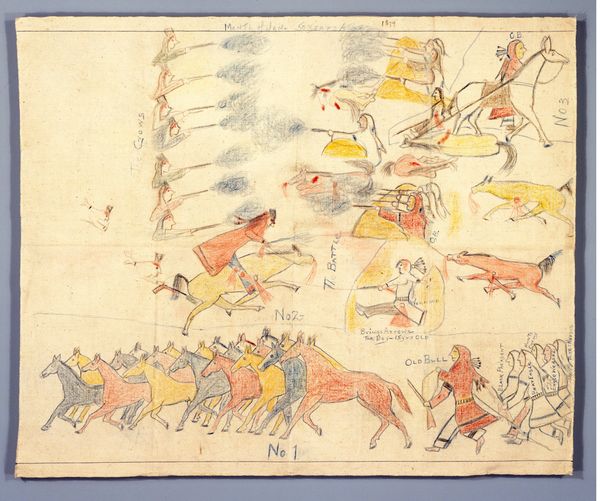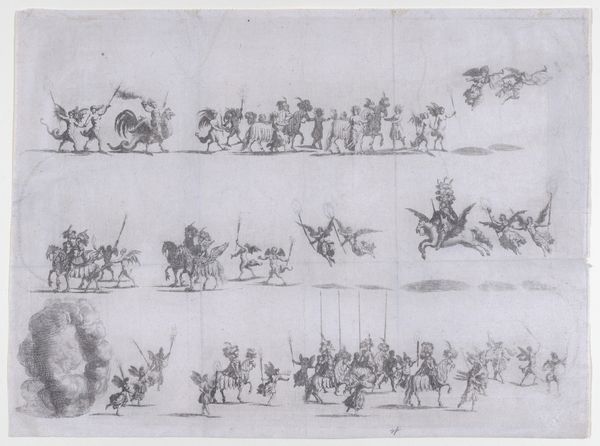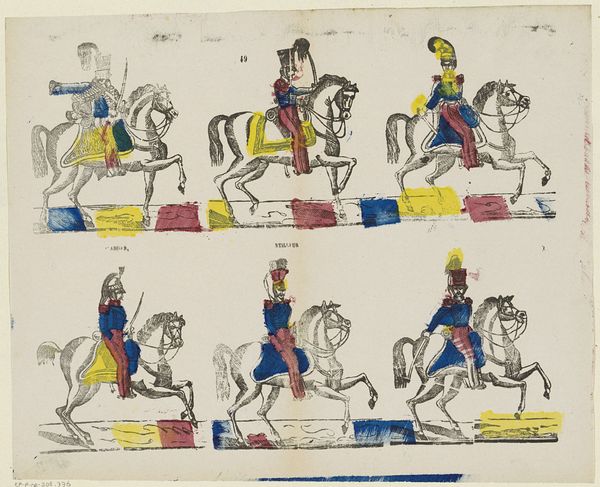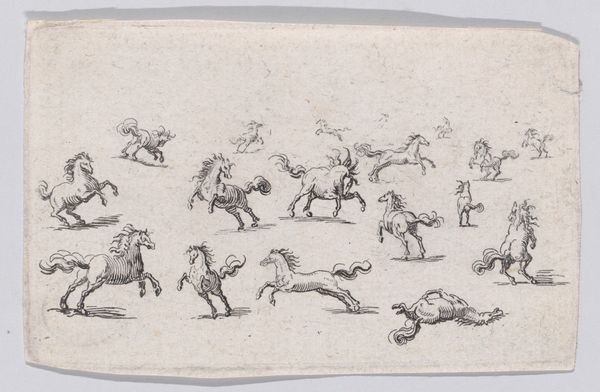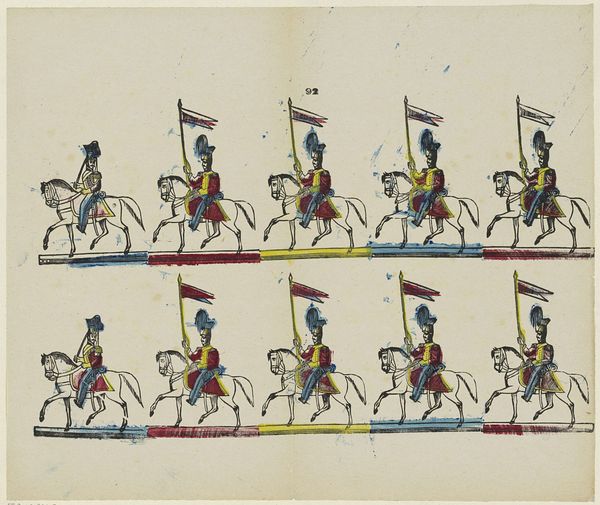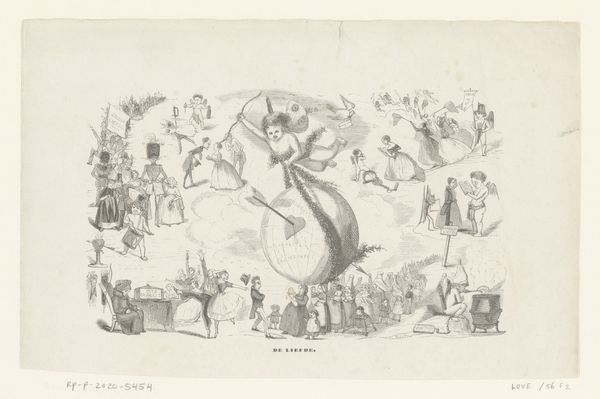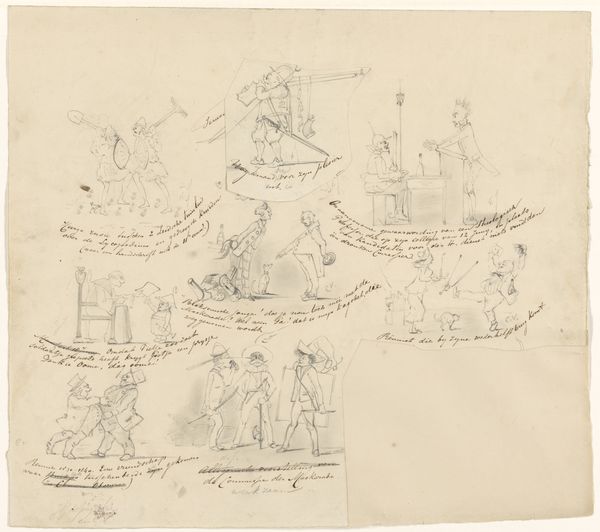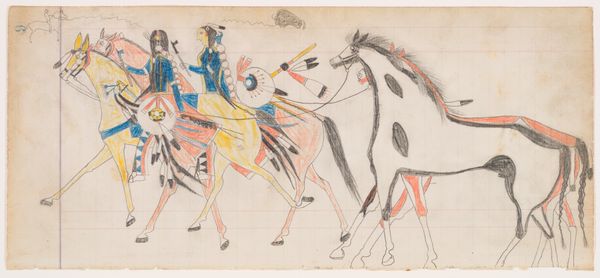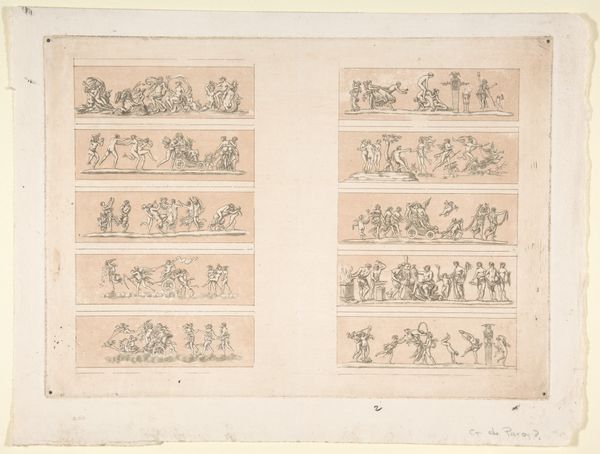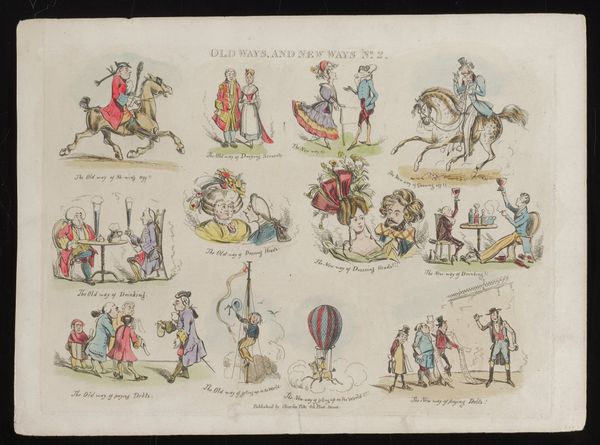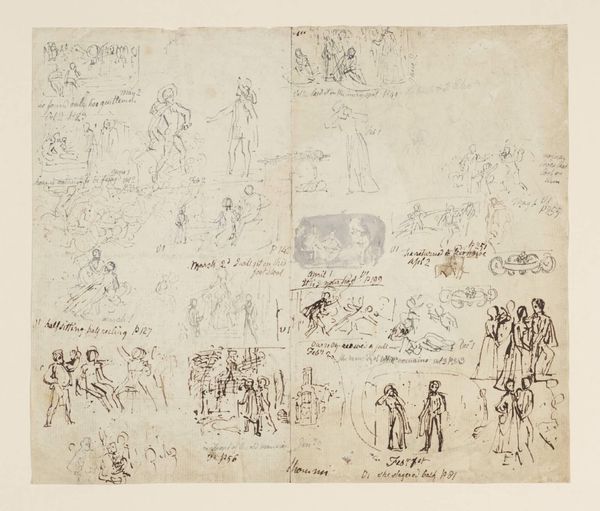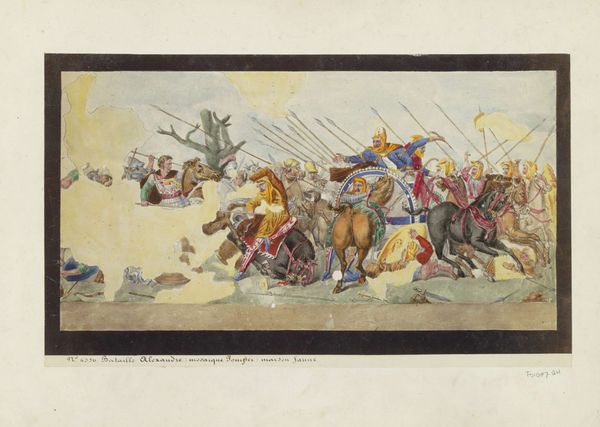
drawing, coloured-pencil, paper, ink
#
drawing
#
coloured-pencil
#
figuration
#
paper
#
personal sketchbook
#
ink
#
indigenous-americas
Dimensions: 69 1/4 x 39 1/2 in. (175.9 x 100.3 cm) (irregular)
Copyright: Public Domain
Editor: This is "Custer's War," created around 1900 by Tȟatȟáŋka Waŋžíla, or Henry Oscar One Bull. It's a drawing using ink, pencil, and colored pencil on paper. It feels... chaotic, yet very deliberately arranged. The bright colors almost make it seem playful, but it's depicting a really brutal event. What catches your eye in this piece? Curator: Oh, "playful brutality" is a good way to put it! I’m immediately drawn to how One Bull chose to represent such a charged historical moment. It feels deeply personal, not just a retelling of a battle. Notice the geometric shapes scattered amongst the figures – to me, they almost hum with unseen energy, a spiritual counterpoint to the violence depicted. Do you sense that tension as well? Editor: Definitely, the geometric shapes do stand out. I initially thought they were purely decorative, but thinking about it as spiritual energy… that makes so much sense in the context. Curator: And think about the act of drawing itself. It’s almost like One Bull is reclaiming the narrative, reframing it from a Lakota perspective after it had been filtered for so long through the dominant white culture. Like singing a story instead of writing it. What emotions surface for you as you look at it? Editor: A sense of…honesty, maybe? The figures are simplified, almost childlike, but that rawness feels incredibly powerful. It doesn't feel like a romanticized view of war, but a real human experience filtered through memory. Curator: Beautifully said. For me, it evokes a mix of sorrow and resilience, the knowledge of profound loss tempered by the enduring spirit of a people. It reminds me that history isn't just a series of dates and battles, but a tapestry woven from individual stories. Editor: This has given me so much to think about – thank you for sharing your perspective. It really opens up the artwork beyond just the historical depiction and into the realm of personal and cultural memory. Curator: My pleasure! Art, at its best, is a mirror reflecting not just the world, but ourselves. I find it interesting that you picked up the notion of the 'rawness', especially through that combination of childlike vision with such terrible historical import. Art is weird, isn't it?
Comments
minneapolisinstituteofart almost 2 years ago
⋮
In the Battle of the Little Big Horn, Cheyenne, Lakota, and Arapaho warriors won a stunning victory over the United States Army. Euro-American and Native American military historians still discuss the battle, but accounts through Indian eyes are relatively rare. One Bull fought in the 1876 battle and later painted this comprehensive view of events. Across the top and to the right, he portrayed various episodes from the confrontation, carefully annotating some in pencil. At the left center, he drew radiating circles to represent the tipi encampments of the principal Lakota and Cheyenne groups, while the heads at lower left depict the warriors' families camped near the battle. In the center of the piece, One Bull illustrates himself holding Sitting Bull's shield, which is light green, while mounted on a horse. He rushes to the battle scene and rescues a friend who has been wounded. One Bull uses pictographic methods to portray this scene. He carefully rendered each horse and provided details on important items such as Sitting Bull's shield.
Join the conversation
Join millions of artists and users on Artera today and experience the ultimate creative platform.
